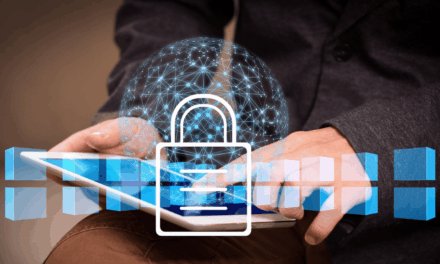Instead of issuing denials and buying time with flimsy excuses in a data breach incident, leaders can practise great crisis management
In view of the recent public relations and compliance debacle involving a large, established organization when it was implicated in a data breach incident, the following rudimentary strategies bear repeating here for leaders who may in future face a similar scenario.
First, leadership has to be absolutely clear on the ethics and compliance perspectives of the directorial board in the handling of such incidents. As high-profile debacles in the past have shown, without good stewardship at the top, any crisis management down the line can be prone to challenges and mistakes.
Second, no matter which crisis management team is involved in handling such high-profile incidents, the playbook has to be politically correct, consistent and not open to interpretation by third-party PR contractors without explicit approval and monitoring from the top down.
What the Oracle says
Experts in communication and branding for the IT industry often craft crisis management policies and recommendation based on past debacles and success stories. Such case studies can be called an “oracle” in predicting how any bespoke data-breach response strategy will actually work out in the event that an actual incident occurs.
The modern general rules of thumb — in a world where the court of social media public opinion has broad reach and impact on the fate of even huge multinational corporations, point to major consequences:
- Reputational damage amplified by social media: Poor crisis management, such as delayed disclosure or defensive posturing, can trigger viral backlash on platforms like X, where hashtags and threads can rapidly escalate negative sentiment. For example, Equifax’s 2017 delayed response led to widespread outrage on social media, with #Equifax trending as users criticized the company’s handling, resulting in long-term brand erosion.
- Loss of consumer trust and market share: Inadequate or insincere responses, like Target’s initial downplaying of its 2013 breach, erode consumer confidence, leading to reduced customer loyalty and sales. Social media amplifies this by spreading user complaints, potentially driving customers to competitors who project stronger security.
- Financial penalties and legal liabilities: Mishandling a breach, as seen in Capital One’s 2019 slow containment, often results in hefty fines (e.g., US$80m from regulators) and class-action lawsuits. Vague or misleading communications can exacerbate legal scrutiny, increasing settlement costs and diverting resources from core operations.
- Regulatory and industry scrutiny: Failure to comply with cyber incident reporting frameworks, such as in JPMorgan Chase’s 2014 weak authentication practices, had invited stricter regulatory oversight and industry-wide criticism. Social media can amplify calls for accountability, pressuring regulators to impose harsher penalties or new compliance requirements.
- Internal morale and talent retention issues: Blaming individuals or failing to address systemic issues, as Equifax did in 2017, can demoralize employees and lead to talent attrition. Public exposure of internal failures on social media platforms can make it harder to attract top cybersecurity professionals, who prioritize transparent and proactive employers.
- Stock market and investor backlash: Delayed or opaque responses, like JPMorgan Chase’s 2014 underestimation of breach scope, can lead to stock price volatility and investor distrust. Social media campaigns by shareholders or activists can amplify calls for leadership changes, as seen with Target’s CEO resignation in 2014.
- Long-term brand recovery costs: Poor crisis management extends recovery timelines and costs, as companies must invest heavily in PR campaigns, cybersecurity upgrades, and consumer remedies to rebuild trust. Equifax’s US$575m FTC settlement and ongoing reputational challenges highlight how social media scrutiny prolongs brand rehabilitation.
General IT crisis management best practices
At the risk of selling ice to Eskimos, there is a need to remind all crisis management teams of the rudimentary best practices:
- Preparation is key: Develop a comprehensive incident response plan with clear roles for IT, legal, PR (especially external contractors), and executive teams. Regular drills ensure readiness and demonstrate proactive governance to stakeholders.
- Timely and transparent disclosure: Notify regulators, consumers, and stakeholders promptly with accurate details to prevent misinformation and enable protective actions. Transparency signals accountability and can position the organization as trustworthy.
- Consumer-centric response directive: Offer meaningful remedies (e.g., automatic credit monitoring, fraud alerts) without burdensome conditions. A generous, accessible support program can turn affected customers into advocates, showcasing the organization’s commitment to their welfare.
- Take full systemic accountability: Address root causes (e.g., unpatched systems, weak authentication) rather than scapegoating individuals. Publicly acknowledging and fixing systemic issues demonstrates integrity and leadership in the industry.
- Third-party oversight: Enforce strict security standards for vendors and partners to close supply chain vulnerabilities. Highlighting improved vendor management post-breach can reinforce the organization’s dedication to security.
- Regulatory compliance is not the burden: Align with local cybersecurity reporting frameworks to meet legal obligations and enhance security posture. Publicizing compliance efforts can position the organization as a standard-bearer for industry best practices.
- Make sure the post-breach review will be uneventful: If the rest of the playbook isadhered-to properly, the post-breach review would not be feared. Conduct thorough audits to identify lessons learned and implement preventive measures. Sharing a detailed post-mortem (without compromising sensitive details) can educate the industry and build credibility as a thought leader.
- Showcase post-incident improvements: Use the breach as an opportunity to highlight cybersecurity investments, such as adopting zero-trust architecture or enhancing employee training. Public campaigns detailing these upgrades can transform negative publicity into a narrative of resilience and innovation.
- Engage stakeholders proactively: Communicate directly with customers, employees, and partners through town halls, webinars, or social media to explain response efforts. For example, hosting a public Q&A with the CISO can humanize the response and foster trust, turning scrutiny into an opportunity for engagement.
- Amplify positive actions: Partner with cybersecurity organizations, contribute to open-source security tools, or launch consumer education initiatives post-breach. These actions can generate goodwill and position the organization as a leader in cybersecurity advocacy.
- Craft a “Redemption Narrative”: Use media outreach to share a story of accountability, recovery, and commitment to customers.

















